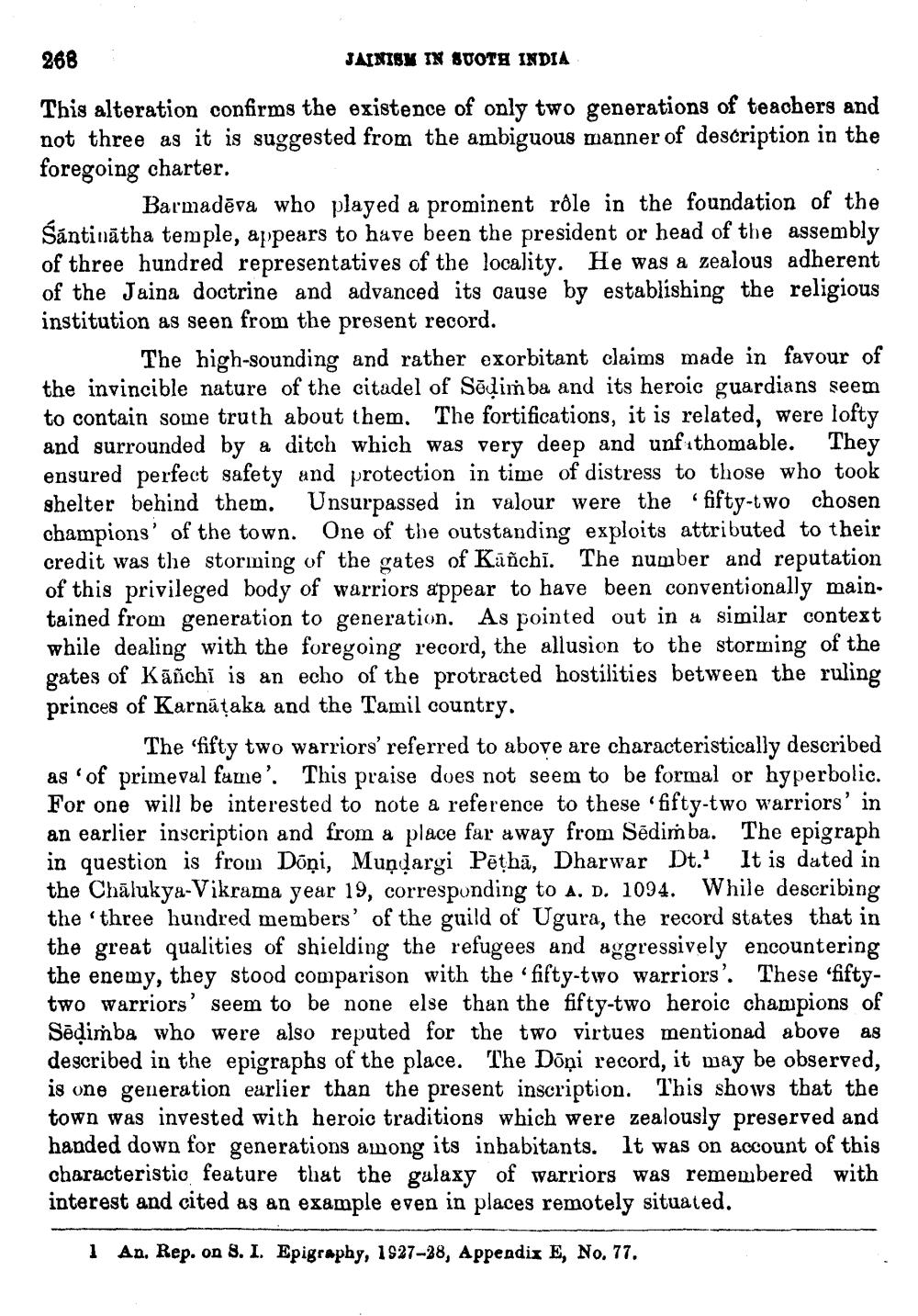________________
268
JAINISM IN SUOTH INDIA
This alteration confirms the existence of only two generations of teachers and not three as it is suggested from the ambiguous manner of description in the foregoing charter.
Barmadēva who played a prominent rôle in the foundation of the Santinatha temple, appears to have been the president or head of the assembly of three hundred representatives of the locality. He was a zealous adherent of the Jaina doctrine and advanced its cause by establishing the religious institution as seen from the present record.
"
The high-sounding and rather exorbitant claims made in favour of the invincible nature of the citadel of Sedimba and its heroic guardians seem to contain some truth about them. The fortifications, it is related, were lofty and surrounded by a ditch which was very deep and unfathomable. They ensured perfect safety and protection in time of distress to those who took shelter behind them. Unsurpassed in valour were the fifty-two chosen champions' of the town. One of the outstanding exploits attributed to their credit was the storming of the gates of Kanchi. The number and reputation of this privileged body of warriors appear to have been conventionally maintained from generation to generation. As pointed out in a similar context while dealing with the foregoing record, the allusion to the storming of the gates of Kañchi is an echo of the protracted hostilities between the ruling princes of Karnataka and the Tamil country.
The fifty two warriors' referred to above are characteristically described as 'of primeval fame'. This praise does not seem to be formal or hyperbolic. For one will be interested to note a reference to these 'fifty-two warriors' in an earlier inscription and from a place far away from Sedimba. The epigraph in question is from Dōni, Mundargi Petha, Dharwar Dt.' It is dated in the Chalukya-Vikrama year 19, corresponding to A. D. 1094. While describing the 'three hundred members' of the guild of Ugura, the record states that in the great qualities of shielding the refugees and aggressively encountering the enemy, they stood comparison with the 'fifty-two warriors'. These 'fiftytwo warriors' seem to be none else than the fifty-two heroic champions of Sēḍimba who were also reputed for the two virtues mentionad above as described in the epigraphs of the place. The Dōni record, it may be observed, is one generation earlier than the present inscription. This shows that the town was invested with heroic traditions which were zealously preserved and handed down for generations among its inhabitants. It was on account of this characteristic feature that the galaxy of warriors was remembered with interest and cited as an example even in places remotely situated.
1 An. Rep. on 8. I. Epigraphy, 1927-28, Appendix E, No. 77.




